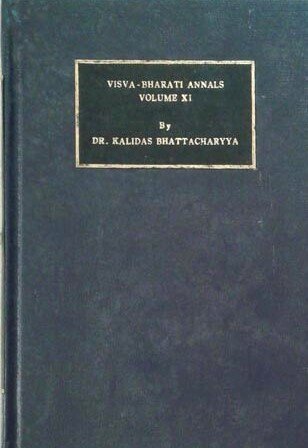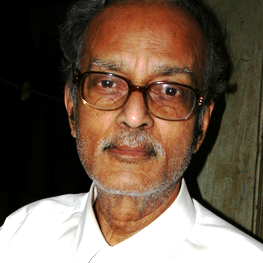Kambu
sk कम्बु) kambu, “one who has three lines or marks in neck”; elephant.
- Kambu, synonym of elephant.
- In ancient India, a conch, a conch-shell.
- A bracelet.
- Kaṃbudhara [kannada ಕಂಬುಧರ]: Viṣṇu [Vishnu], who holds a conch in his hand.
by Kalyan Kumar Sarkar
A textual and linguistical revisitation of pre-Angkorean and Angkorean inscriptions by a renowned Indian researcher.

Type: hardback
Publisher: Visva-Bharati Annals, ed. Dr. Kalidas Bhattacharya , Vol. XI, Santiniketan, India
Published: June 1968
Author: Kalyan Kumar Sarkar
Pages: 77
Language : English
ADB Library Catalog ID: HISIND5
Thanks to Indian scholars from the 20th century, we are getting a more refined image of the cultural and physical interaction between ancient Cambodia people and Brahmin visitors who ended up living in the country and gaining spiritual influence on Khmer elites.
One question remains, though: what did make them take a long a perilous trip to mainland Southeast Asia? Most of them were coming from powerful families in North, West and South India, so this was not some kind of out-of-necessity migration. Were they traveling in quest of the mythical and mystical Sovannabhumi, The Land of Gold? Were they descending from Khmer travelers who had themselves reached the Indian continent centuries before?
In this luminous study, the author, after noting that “Indian personalities coming from India in the following epochs were responsible for bringing with them new doses of Indian culture and facilitated to a great extent the uninterrupted continuity of contacts between the cultural colony and the metropole”, selects from Cambodian epigraphy and Chinese texts references to the continuity of these contacts through the ages, in particular:
“(a) Needless to say that Kaundinya II (Ch’iao-ch’en-ju), the second Indianizer of Fu-nan, according to the Chinese texts, was originally a Braliniana of India (in the beginning of the fifth century A.D.).^®
(I?) One of the inscriptions of Sambor Prei Kuk (K. 438) tells us that a Brahmana of India, named Durgasvamin, born in the Daksinapatha, received in marriage the daughter of King Isanavarman I (? 617 – 635 A.D.) and erected a linga.
© In the stele of Western Baray (K. 904) we see that Queen Jayadevi had in her service a Saiva Brahmana named Sakrasvamin and he was a native of Madhyadesa, i.e. India. This Indian Brahmana married the princess Sobhajaya, daughter of King Jayavarman (I ? 657−680÷681 A.D.).
(d) The inscription of Vat Prah Einkosei (K. 263) furnishes us with a similar example. An Indian Brahmana named Divakarabhatta who was born in India in the Mathura region became the husband of the princess Indralaksmi (968 A.D.).
(e) In the same way, the stele of Kapilapura called “Stele of Ankor Vat” (K. 300) tells us of another Brahmana named Sarvajnamuni who was “born in Aryadesa (India proper) and who had come through piety to this country of Kambu (i.e. Cambodia).
(f) In the stele of Prah Bat, n° XLIV, we come across a Brahmana of the name of Agastya, a connoisseur of the Vedas and the Vedangas, who was hailing from Aryadesa. His wife of a famous family was the glorious Yasomafi.”
“Long ago M. Lin Li-kuang had drawn our attention to the biography of Na‑t’i (Punyodaya), who originally belonged to Central India, and who was a great propagator of Tantrism in China and in Cambodia at the time of Hiuan Tsang. In this biography we find that “in 663 the people of the country of Chen-la (i.e. Pre-Ankorian Cambodia), in the South Seas, where Na‑t’i had already propagated the religion and who had not ceased to respect it, wanted to see him again. It is not at all impossible that the Buddhist texts translated by him (such as the “Octuple Mandala”, the “Method for adoring the Buddhas” and the “Atanitiya”) were known in Cambodia in this epoch. We cannot, however, be very definite about the study of these texts in ancient Cambodia.”
Written decades ago, the ending remarks remain highly pertinent: “Is it right to think that these linguistic and literary contacts between ancient India and Cambodia were in one direction? Sanskrit epigraphy in Cambodia testifies to the formation and the presence of certain Sanskrit words which are semantically different from those in India. Thanks to the manifold contacts between India and Cambodia in the ancient period, it is probable that those Sanskrit words whose origin it is not easy to find out, may have been derived from words of an Indochinese or even an Indonesian language with which the Indian population was familiar, if not from words of an indigenous Indian language. At any rate, the study of Old Khmer in relation to Sanskrit may help us in determining the role and assessing the contribution of a non-Indian substratum in the fonnation and evolution of Sanskrit language even within India itself.”
[1] Lin Li-kouang, “Punyodaya (Na-T’i), un propagateur du Tantrisme en Chine et au Camboddg à l’époque de Hiuan-Tsang”, Journal Asiatique, 1935, pp 83 – 100.
Tags: Sanskrit, Sanskrit studies, Old Khmer, epigraphy, Cambodian inscriptions, inscriptions, Indian researchers, linguistics

Prof. Kalyan Kumar Sarkar (1 Feb 1932, Krishnagar, West Bengal, India — 15 March 2014, Windsor, Ontario, Canada) was a historian of Ancient India and Professor Emeritus, University of Windsor, Ontario, Canada.
Born and educated in India, Dr. Sarkar went to Paris in 1958 to complete his Ph.D. at Paris-Sorbonne (Early Indo- Cambodian Contacts-Literary and Linguistic), then taught at Visva Bharati (Santiniketan, India), the university founded by poet Rabindranath Tagore. He was initiated in the history of Cambodian history and culture by his mentor Dr. Prabodh Chandra Bagchi, then vice-chancellor of of Visva Bharati Central University. In Paris, he followed the teaching of Prof. Au Chhieng (EPHE), Francois Martini, George Coedes, Jean Filliozat.
In 1970, he accepted an offer to teach art and cultures of Asian countries at the University of Windsor, Canada, and retired in 1997.